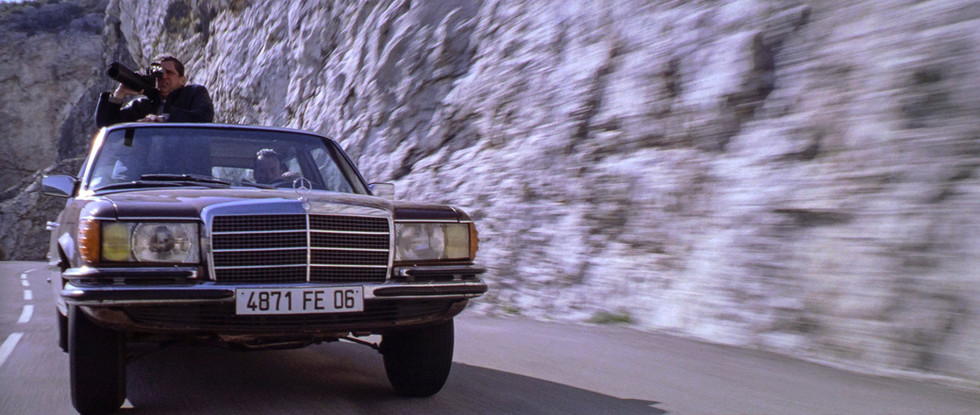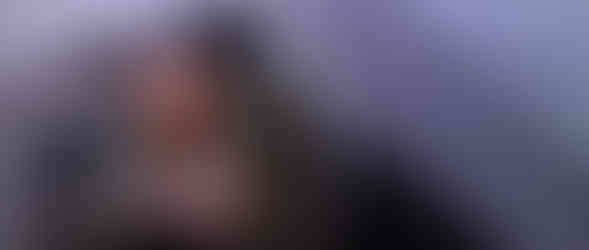Outstanding 4K upgrade on fan favorite “Ronin: 25th Anniversary Edition”
- Bill Kelley III

- Jun 19, 2023
- 6 min read
Updated: Jul 16, 2023
4K ULTRA HD REVIEW / HDR FRAME SHOTS
Robert De Niro plays Ex-CIA agent Sam, who joins an elite international crew to get a metal briefcase. He and Vincent played by French actor Jean Reno are involved in a high-speed chase in a Paris tunnel. The hunt also leads to the Arles Amphitheater in Southern France, built by the Romans in 90 A.D.
(Click an image to scroll the larger versions)
“RONIN: 25th ANNIVERSARY EDITION”
4K Ultra HD & Blu-ray; 1998; R for strong violence and some profanity
Best extra: Commentary with director John Frankenheimer
JOHN FRANKENHEIMER was nearing 70 when he directed this gritty, old-fashioned Euro-caper – using Paris, his favorite city, as the backdrop for two of the most incredible car chase scenes ever filmed. A racecar driver himself, the American director also filmed “Grand Prix” (1966). He hired more than 150 stunt drivers rushing up to 120 mph, and wrecked 80 cars, making “Ronin” the perfect candidate for a 4K upgrade from Kino Lorber and MGM/UA.
It’s a modern-day twist on the masterless samurai, who wander the countryside as swordsmen for hire. Originally the brainchild of J.D. Zeik, who had read James Clavell’s novel “Shogun” when he was 15; the idea simmered for years. After seeing the silhouettes of heavily armed gendarmes in Nice, Zeik wrote his first screenplay. David Mamet then retooled it for filming under the pseudonym “Richard Weisz.”
EXTRAS
The 4K disc and Blu-ray both include Frankenheimer’s commentary, which is a treasure trove of stories, cinematic know-how, and insight, a perfect gift for avid film students and cinephiles. He opens the track by saying how much he wanted to start the film on the narrow steps on the southern end of the Rue Drevet, in the Montmartre district of Paris. He next diagnoses how he and his crew weaved the scene between the real steps and a set piece on a Paris soundstage while using a natural wipe edit to hide the jump.
(1&2) Sam walks down the narrow steps on the southern end of the Rue Drevet, toward a small Paris café. There he meets IRA operative Deidre (Natascha McElhone) and three others hired to snatch the well-guarded metal briefcase. (3) Sam speaks French and pretends he doesn’t understand English when Deidre asks him a question. (4) Sam and Vincent (Jean Reno) get to know one another. (5-7) Diedre provides basic details on the metal case and what’s going to be needed for the job.
The enclosed Blu-ray house the rest of the carryover extras. In one of the five archive featurettes, Frankenheimer says, “The subject leaned itself to assembling an international cast [to play] a gang of ex-intelligence people.” His cast includes Natascha McElhone (Deidre) and Jonathan Pryce (Seamus) playing IRA operatives, who recruit five men to snatch a well-guarded metal briefcase. (We never learn its contents, a perfect McGuffin.) Robert De Niro (Sam) leads as an ex-CIA agent, with “The Professional” Jean Reno (Vincent); Stellan Skarsgård as Gregor, an former KGB and electronics expert; Sean Bean as Spence, and Skipp Sudduth as Larry the team’s driver. Sudduth describes Frankenheimer’s direction as point-blank: “You don’t earn points by smashing into walls and I don’t want to see those brake lights.”
Frankenheimer staged all of the chase scenes with stunt-car coordinator Jean-Claude Lagniez. “Every stuntman in the world would have dreamed of making a film like this with Frankenheimer,” Lagniez says in “Filming in the Fast Lane.” Special cars were assembled to capture De Niro and McElhone behind the wheel, while stunt drivers in the trunks handled the actual driving, accelerator, and brakes. Once into filming the chases, Frankenheimer was “on fire,” McElhone says. “You thought he cared about the actors and their performance – we were nothing compared to the cars and the speed. He couldn’t get enough of it.” There was no second unit on “Ronin”; Frankenheimer orchestrated every 2200 separate shots for four months.
French cinematographer Robert Fraisse, who also filmed “Hotel Rwanda,” “Enemy at the Gates,” and “The Notebook,” provides a 30-minute interview, originally presented on the 2017 Arrow Video edition. He talks about his career and his working relationship with Frankenheimer, who never looked through the camera while on set. Even so, the director knew exactly what he wanted, telling the camera operator the exact lens to be used. Frankenheimer loved the short-focus lens (wide angle), which gives the audience a clear, deep field of focus, showcasing each of the characters in the foreground, middle ground, and background. He was a master at positioning his cast within the frame, evident in all his films.
(1-4) The team moves to the South of France and Sam determines more surveillance is needed. He and Deidre pretend to be husband and wife and gather intelligence outside the Hôtel Majestic, Cannes, Alpes-Maritimes, France. (5) The team examines the photographs made during the mission showing the Target (Lionel Vitrant).
Frankenheimer’s career spanned from the late 1950s directing 27 CBS “Playhouse 90” live television dramas, then some of the best political thrillers of the day such as “The Manchurian Candidate” (1962) also released this month on 4K from Kino Lorber, and “Seven Days in May” (1964). Burt Lancaster was his go-to actor; they teamed for “The Young Savages” (1961), “Birdman of Alcatraz” (1962),” Seven Days in May,” and, my personal favorite, “The Train” (1964), a World War II drama filmed in France in which Lancaster plays a French resistance fighter trying to keep the Nazis from smuggling masterpiece paintings into Germany. “The Train” is also scheduled for an upcoming 4K release from KL Studio Classics.
Frankenheimer was close to the Kennedy family, driving Bobby Kennedy to the Ambassador Hotel in downtown Los Angeles that June night in 1968. After Kennedy was killed by an assassin’s bullet, the grieving Frankenheimer and his wife moved to Paris.
VIDEO
This unofficial 25th Anniversary Edition was scanned in 4K from the original Super 35 (common-top) camera negative (2.35:1 aspect ratio), captured with spherical lens – which gives the 4K Ultra HD a major bump in resolution and color grading compared to the previous Arrow Video disc sourced from a 4K master and the old 2K Fox/MGM Blu-ray. Distant objects – especially signs and posters on buildings and along streets – are much easier to read. The natural film grain is kept intact from start to finish, although I noticed a slight grain flicker from window highlights during a warehouse scene when the gang first assembles. Overall sharpness is first-rate from facial markings to the abundance of wide-angle shots and its deep focus.
This time Fraisse didn’t supervise the 4K color grade (HDR10 & Dolby Vision), which he handled on the Arrow disc, and he dialed on the darker side and with a slightly warmer palette. Frankenheimer mentions during the commentary that he had the film stock developed in the CCE photochemical process from Deluxe Labs, which “exaggerates the blacks and reduces the primary colors and hues,” giving “Ronin” a distinct desaturated look.
The Target - Metal Briefcase
The action sequence was filmed in the French Riviera, the town of La Turbie, and the old section of Nice.
HDR10 peak brightness hits 949 nits and averages 297 nits, while everything was encoded onto a 100 Gigabit disc, giving the video breathing room, running from 50 Megabits per second to 120 Mbps, while averaging in the upper 70s Mbps.
The enclosed Blu-ray has also been upgraded from the 4K master with new color grading and brightness. The grain structure also seems different to the 2017 disc. Does that mean the negative was rescanned, which seems unlikely and costly. Still, whatever the case, this 4K and Blu-ray are much closer to Frankenheimer’s original vision.
AUDIO
The same serviceable six-channel DTS-HD soundtrack is ported over with excellent bass response during the explosions, while bullet effects fly across the room from speaker to speaker. The dialogue is never lost against the effects, and Czech-Swedish composer Elia Cmiral’s orchestral score – he replaced Jerry Goldsmith (“Star Trek: First Contact,” “Chinatown”) – who left the project.
“Ronin” ends just as it began in the small Paris café, as Sam and Vincent covertly have one final coffee before heading out on life’s next assignment.
Frankenheimer made one more theatrical film, the forgettable “Reindeer Games,” but completed his career with HBO’s eight-Emmy-nominated “Path to War,” the story of President Johnson’s decisions involving the Vietnam War, finishing just before his death from a massive stroke in 2002.
John Frankenheimer, we miss your style of filmmaking. They just don’t make them like you anymore.
― Bill Kelley III, High-def Watch producer


























































Comments